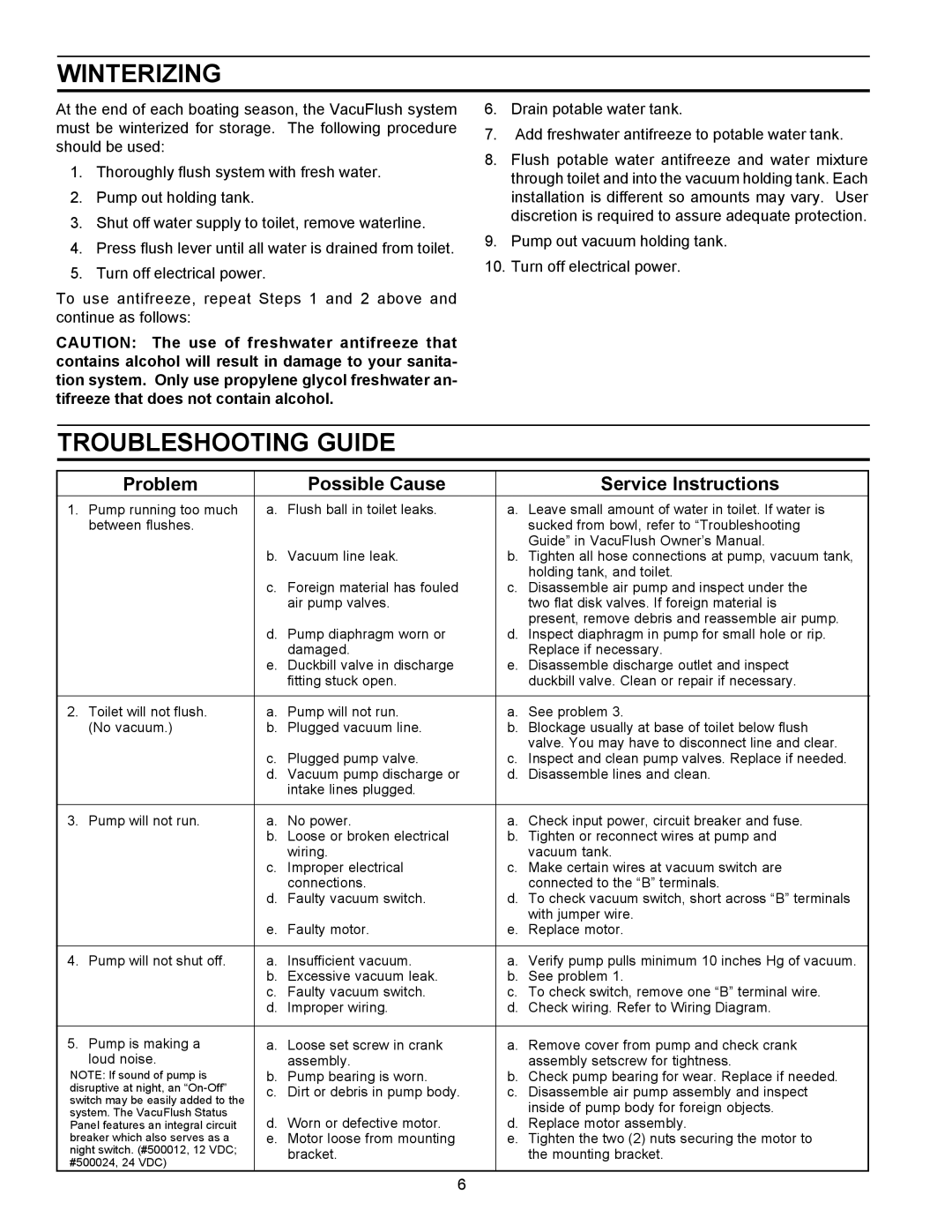VACUUM HOLDING TANK specifications
The SeaLand Vacuum Holding Tank is a high-performance solution designed specifically for marine sanitation systems. These tanks ensure efficient waste management on boats and yachts, providing a reliable method for holding sewage until it can be properly disposed of. Engineered with advanced technology, SeaLand vacuum tanks are known for their durability, lightweight design, and effective waste containment capabilities.One of the main features of the SeaLand Vacuum Holding Tank is its vacuum-based waste collection system. This technology uses a vacuum pump to draw waste into the holding tank, eliminating the need for traditional gravity systems. This design minimizes the chances of leaks and backflow, ensuring a clean and odor-free environment on board. With a vacuum system, the tank can also operate efficiently in various boat configurations, including those with limited space.
The SeaLand tank is constructed from high-quality, corrosion-resistant materials that withstand the harsh marine environment. Its robust design prevents degradation due to exposure to saltwater, providing longevity and reliability. The tank is designed for easy installation and maintenance, featuring a compact size that fits smoothly into the limited spaces typical in marine vessels.
Another notable characteristic of the SeaLand Vacuum Holding Tank is its innovative level monitoring technology. This feature enables boat owners to track the waste level inside the tank accurately, which is crucial for ensuring compliance with marine sanitation regulations. The monitoring system alerts users when the tank reaches its capacity, prompting timely disposal and preventing overflow situations.
Moreover, SeaLand focuses on user-friendliness, ensuring that its vacuum holding tank is compatible with a variety of marine sanitation systems. The installation process is straightforward, and the tank can be integrated with existing components without requiring extensive modifications. This flexibility makes it a preferred choice for boat builders and owners looking for an efficient waste management solution.
In summary, the SeaLand Vacuum Holding Tank is a state-of-the-art waste containment system for marine applications. Its vacuum technology, durable construction, level monitoring capabilities, and ease of installation set it apart from traditional holding tanks, making it an ideal choice for any vessel seeking effective waste management solutions. Whether for recreational or commercial use, this tank ensures that boating remains a clean and enjoyable experience.

